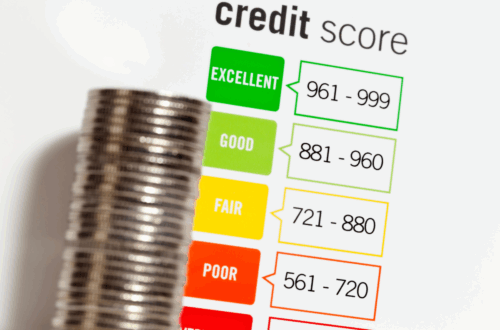In Singapore, where the cost of living continues to rise and unexpected expenses can arrive without warning, financial preparedness is not optional. Many Singaporeans find themselves torn between relying on their own emergency savings or turning to an instant cash loan when a crisis hits. This article examines which route is likely to serve you better under different circumstances, and gives actionable advice you can apply today.
What Exactly Is a Fast Cash Loan in Singapore?
A fast cash loan is a type of short term borrowing that aims to get money into your hands swiftly. In Singapore, such loans may be offered by banks or through licensed money lenders. The primary attraction is how rapidly you can get the funds — sometimes within hours or a single business day — after submitting basic documentation and proof of income.
Banks tend to provide more structured personal loans with relatively lower interest rates, but their approval processes often take longer and rely on cleaner credit records. Meanwhile, a regulated money lenderoffers more lenient criteria and faster processing. Even though the interest rates are higher, they are legally capped under Singapore law, ensuring fairness and transparency. You can learn more about the process by reading this guide on applying for a personal loan even with a bad credit score in Singapore.
What Is an Emergency Fund and Why It Matters
An emergency fund is a pool of cash reserved exclusively to deal with unforeseeable financial shocks. It differs from regular savings which might be earmarked for vacations, gadgets, or long term goals. The sole purpose of an emergency fund is to cover expenses such as sudden medical bills, urgent home repairs, or temporary loss of income.
Financial advisers in Singapore often recommend saving enough to cover three to six months of essential living expenses. For those with dependants or unpredictable incomes, aiming for nine months’ worth might be wiser. The key idea is that with a well sized emergency fund, you can face life’s surprises without borrowing.
The best way to build that fund is through consistent, disciplined saving. Many people assign a fixed percentage of salary to go into a separate account the moment they are paid. Over time, this builds a comfortable buffer that offers peace of mind.
Side-by-Side Comparison: Fast Cash Loan vs Emergency Fund
Though both approaches address urgent financial needs, they operate in fundamentally different ways. Here is how they stack up.
| Aspect | Fast Cash Loan | Emergency Fund |
| Speed and Access | Very quick access when you need money now> | Instantly available (you already own the cash) |
| Cost | Interest charges and possibly fees | No interest or fees, only opportunity cost |
| Risk | Potential for debt accumulation and credit damage if unpaid | No debt risk, but requires discipline to build and maintain |
| Psychological Burden | Can feel heavy, since repayments loom | Less stress, since there is no external creditor |
| Flexibility | Allows for large sum access (if approved) | Limited to amount you have saved |
When It Makes Sense to Use a Fast Cash Loan
Even while recognising the advantages of an emergency fund, there are situations where taking a quick loan may be the practical choice:
- You Have Minimal or No Savings
If you are just starting your financial journey and your emergency fund is negligible, a fast loan may cover a crisis before your buffer is built - Expenses Exceed Your Savings
Even if your emergency fund is healthy, major medical bills, structural repairs, or legal costs might surpass what you have. In such cases, borrowing to supplement makes sense. - Funds Are Illiquid
Suppose your savings are locked in fixed deposits or investments with penalties for early withdrawal. A loan can act as a bridge until your funds become accessible again. - Preserving Investments
< If you believe your investments will rebound strongly, you might prefer to borrow instead of cashing out at a loss. A good starting point is to review resources on how to buy your first stock in Singaporeto understand how savings and investments can complement each other.
When an Emergency Fund Is the Preferable Option
For most Singaporeans, an emergency fund is the more prudent and sustainable choice. Here are the scenarios in which it truly shines:
- Handling everyday unexpected costs like medical bills, emergency dental work, or appliance repair
- Covering income gaps caused by illness, temporary retrenchment, or reduced working hours
- Avoiding the burden and stress of debt and interest
- Maintaining freedom from creditors or external pressures
When you rely on your own savings, you maintain full control. You dictate how much to spend, when, and how fast to recover your reserve.
How to Create and Grow Your Emergency Fund in Singapore
If your emergency fund is insufficient or non existent, it is time to build it deliberately. Here are concrete steps:
- Set a Realistic Target
Work out how much you spend monthly on essentials (rent, utilities, food, transport, insurance, schooling). Multiply that by at least three months. If your job is less stable, lean toward six or more months. For a sense of essential expenses, it helps to know the landscape of car insurance companies in Singapore since insurance is often part of core monthly commitments. - Automate Transfers
Arrange for a fixed amount to move automatically from your main account to a separate savings account the moment your salary arrives. This “pay yourself first” mindset prevents overspending. - Keep It Separate
Use a distinct account for emergencies to reduce temptation to dip into it for everyday expenses. A decent savings account or high interest account is ideal. - Start Small If You Must
If saving three or six months is daunting, begin with a modest goal — say S$1,000. Once you reach that, raise your target over time. - Replenish Promptly
If you have to use the fund, make its restoration a priority. Treat replenishing your buffer like a fixed expense.
Using a Fast Cash Loan Responsibly
If borrowing becomes unavoidable, here is how to minimise risk:
- Borrow Only from Licensed Providers
In Singapore, always use licensed lenders so that you remain under the protection of regulatory oversight. For broader context, you might also explore the Singapore fintech sector which continues to shape how lending and borrowing evolve. - Read and Understand the Contract
Never sign before you know the interest rate, repayment period, penalties, and total cost. - Borrow Only What You Truly Need
Resist the temptation to overborrow. Larger sums mean heavier repayments and more risk. - Plan Your Repayment Strategy
Before you borrow, be clear how you will repay on schedule to avoid late fees or compounding debt.
Plugging in External Learning Paths
To deepen your financial literacy and awareness, here are some useful reading routes:
- Explore a list of the top fintech companies in Singapore in 2025 to understand how innovation influences lending options
- Learn about things to do at Raffles Singaporeif you are looking to unwind after managing stressful finances
- Discover must see spots during the cooler months in Singapore/a> for affordable relaxation
- Check out the best hiking trails in Singapore as a reminder that financial wellbeing goes hand in hand with personal wellbeing
Striking the Right Balance
The ideal path is not purely one or the other. The best scenario is having a fully built emergency fund while viewing a fast cash loan as a rare fallback. In real life, however, many fall somewhere in between.
If you are still building your buffer, a loan may help you get through one crisis. Then focus your energy on saving more aggressively so the need to borrow gradually fades. Over time you should aim to shift from dependence on borrowing to reliance on your own reserves.
Final Thoughts

In Singapore’s dynamic and demanding environment, both instant borrowing and self built savings have roles to play. An instant cash loan from a bank or licensed money lender can deliver fast relief when a crisis arrives, but it carries a price in interest and stress. An emergency fund by contrast is your own base of support — debt free, flexible, and stress reducing.
The wiser path for most is to dedicate yourself to building a strong emergency fund, and reserve instant borrowing as a last measure. By combining disciplined saving, prudent borrowing when absolutely needed, and continual financial education, you can navigate unexpected costs with confidence and resilience.





